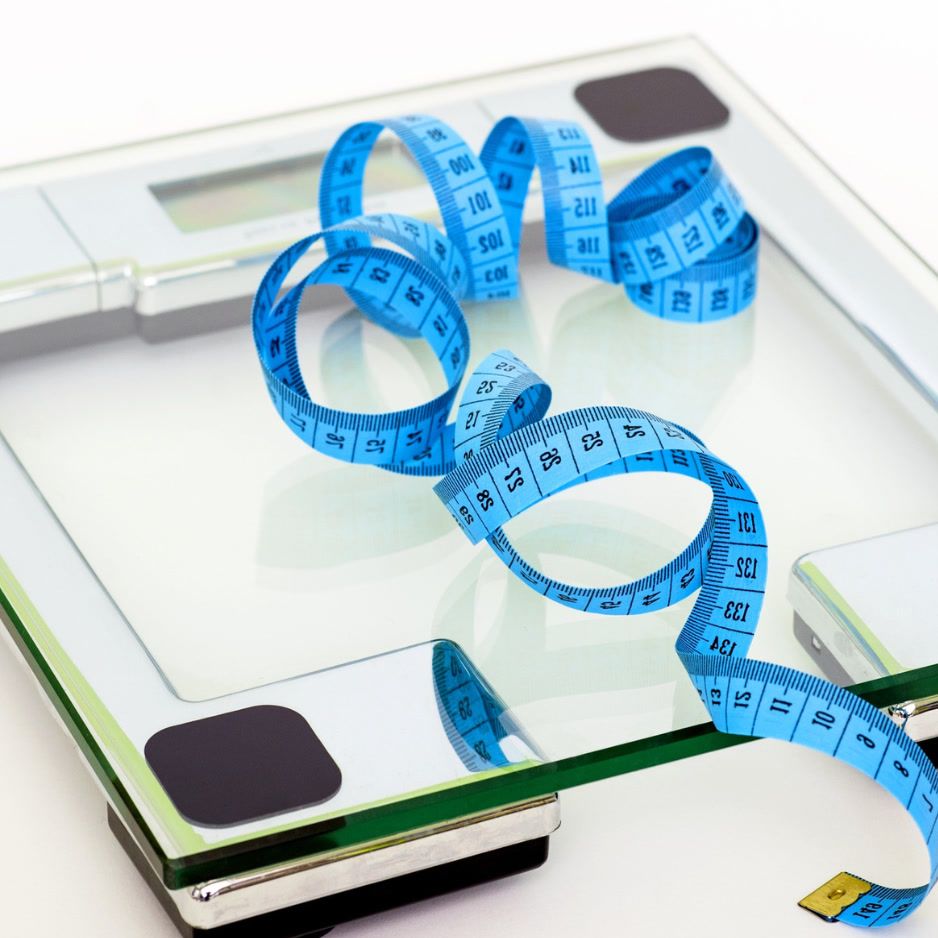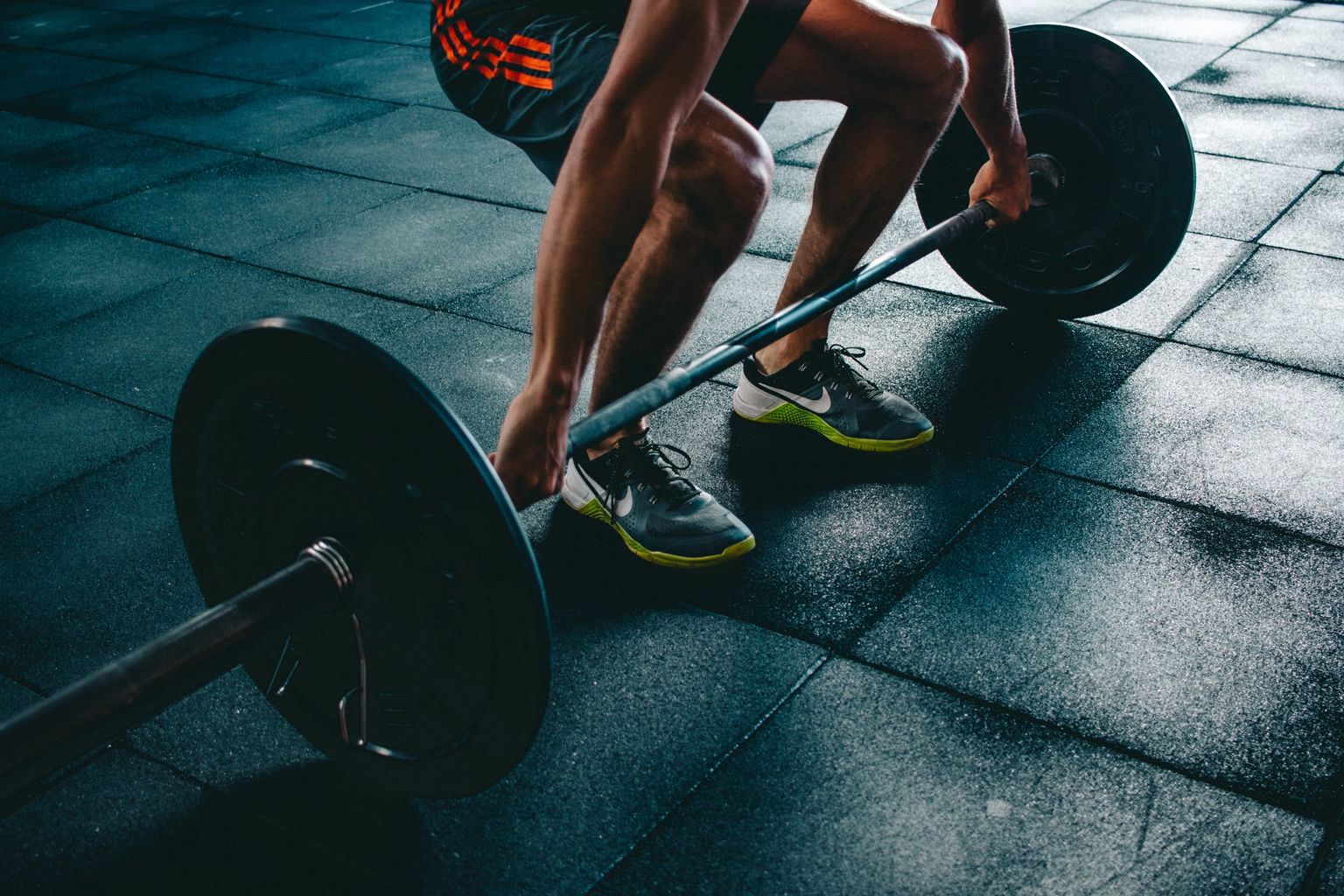Strength Training for Bone Density: Preventing Osteoporosis through Exercise
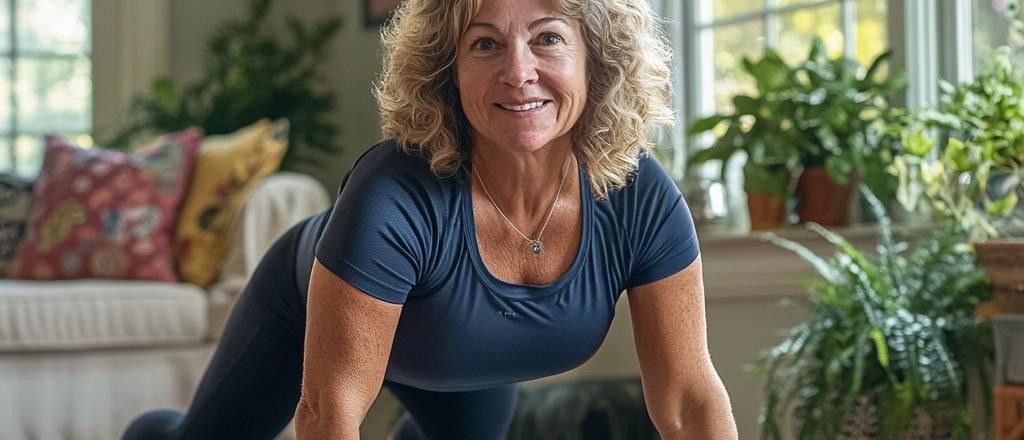
The Ultimate Exercise Guide for Osteoporosis: 4 Pillars for Stronger Bones
Why Exercise Is Non-Negotiable When You Have (or Want to Prevent) Osteoporosis
The condition we know as osteoporosis—literally meaning “porous bone”—is explained in detail in our guide to bone density scans for osteoporosis detection. Over time, the scaffolding that keeps your skeleton sturdy thins out, raising fracture risk—especially in the spine, hip, and wrist.
Genetics and hormones largely fall outside your control. Diet and movement, however, are daily choices—and targeted exercise delivers a direct, powerful stimulus for stronger bones.
- Regular exercise signals bone-building cells (osteoblasts) to lay down new mineral, helping maintain or even improve bone density.
- A 2022 BMJ meta-analysis—summarized by Harvard Health—found that programs combining balance, strength, and resistance work cut fall-related fractures by 60%.
- Activity also strengthens muscles, improves posture, and steadies your gait—all powerful fracture-proofing tools.
Bottom line: Medication and calcium are important, yet regular strategic loading through exercise is crucial to optimize bone strength and complement these other treatments.
Read This First: Safety Checklist
- Get medical clearance if you’ve had a fragility fracture, very low T-scores, or other health conditions.
- Start slowly and progress gradually. Increase either weight or repetitions—never both at once.
- Focus on form, not ego. Jerky or rushed movements create shear forces brittle bones can’t handle, as highlighted by the Mayo Clinic.
- Pain ≠ progress. Sharp back pain, radiating nerve symptoms, or dizziness mean stop and reassess.
- Have a “spotter plan.” Use a chair or countertop for balance moves and keep your phone nearby.
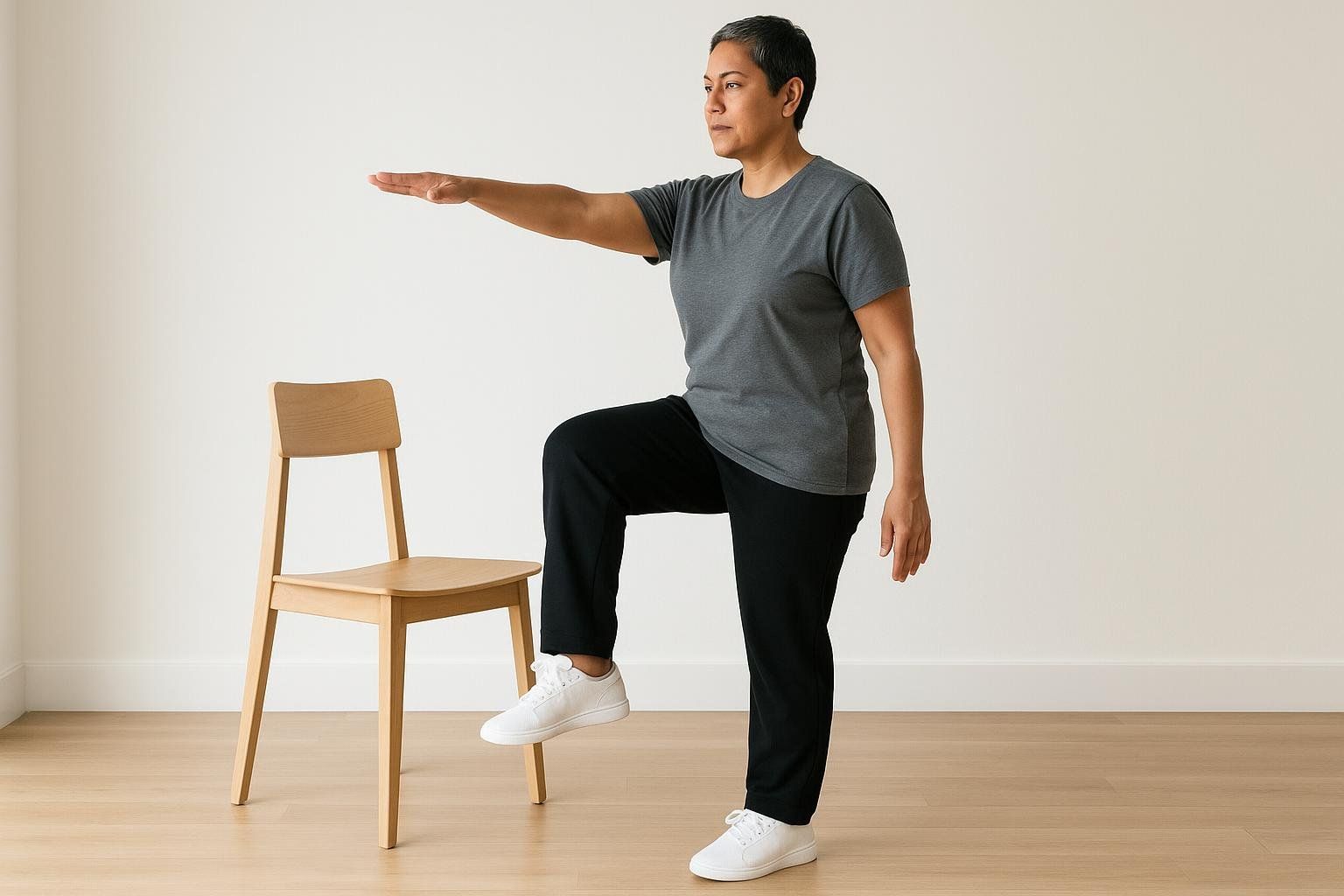
Essential Exercises for Osteoporosis: The 4 Pillars
Adopt all four categories each week for the biggest bone-building payoff.
1. Weight-Bearing Impact Work
These moves make you work against gravity while on your feet. The gentle impact stimulates hips, knees, and spine.
| Exercise | How To | Reps/Sets | Frequency |
|---|---|---|---|
| Brisk walking | Walk at a pace that elevates heart rate yet allows conversation | 20–30 min | 4–5×/week |
| Heel drops | Stand tall, rise onto toes, then drop heels lightly | 10–15 reps × 2 | Daily |
| Stair climbing | Use real stairs or a step bench | Climb 2–3 flights (≈10–15 steps per flight) or step continuously 5–10 min | 3×/week |
| Mini hops (if safe) | Small jumps in place, landing softly | 20 hops × 2 | 2×/week |
Helpful Tip: A weighted walking vest can amplify bone-loading forces. If you’re considering one:
- Start light. Choose a vest that’s about 5 % of your body weight—a load shown safe and effective in postmenopausal women (Jessup et al., 2000).
- Progress gradually. Add weight in small increments only after several weeks of comfortable use.
- Check your balance. Ensure you can walk and turn safely with the vest before increasing load.
- Get the green light. Discuss vest use with your healthcare provider, especially if you have balance issues or existing fractures.
2. Muscle-Strengthening (Resistance) Training
Muscles tug on bone, creating the internal stress that tells skeletons to get denser.
| Move | Primary Bones Loaded | Reps/Sets | Frequency |
|---|---|---|---|
| Sit-to-Stand | Femur, pelvis | 8–12 reps × 3 | 2–3×/week |
| Resistance-Band Row | Thoracic spine, humerus | 10 reps × 3 | 2×/week |
| Wall (or Goblet) Squat | Hip, spine | 8–10 reps × 3 | 2×/week |
| Overhead Press (dumbbells < 10 lb to start) | Humerus, shoulder girdle | 6–8 reps × 3 | 2×/week |
| Bridge | Lumbar spine, pelvis | 10–12 reps × 2 | 3×/week |
Progression principle: once you can exceed the rep range comfortably, increase resistance by the smallest available increment.
3. Balance & Stability Drills
Falls fracture more bones than weak density alone. Sharpen proprioception—your body’s ability to sense its position in space—so slips don’t become ER visits.
| Drill | How To | Duration/Reps |
|---|---|---|
| Tandem Stance | Stand heel-to-toe, arms out | 30 sec/side × 2 |
| Single-Leg Stand with Reach | Stand on one leg, reach opposite arm forward | 10 reaches/leg |
| Modified Tai Chi “Wave Hands” | Slow, sweeping arms while shifting weight | 5 min flow |
Aim for 10–15 minutes of balance work at least 3×/week.
4. Flexibility & Posture
Flexible muscles reduce joint stress and help maintain spine alignment.
| Stretch | Target | Hold |
|---|---|---|
| Chest Opener (doorway) | Pectorals, thoracic spine | 30 sec × 2 |
| Hip Flexor Stretch | Iliopsoas | 30 sec × 2 per side |
| Cat–Camel (gentle) | Spinal mobility | 5 slow cycles |
Stretch after workouts or warm showers when tissues are warm.
Red-Flag Moves: What to Avoid (or Modify)

- Deep spinal flexion (e.g., full sit-ups, toe-touches)
- Twisting under load (heavy golf swings, weighted Russian twists)
- High-impact plyometrics (box jumps) if you already have vertebral fractures
- Abrupt jerks (kettlebell snatches) without proper coaching
Stick to slow, controlled ranges—speed + osteoporosis is a risky combo, according to the Mayo Clinic.
Choose Your Mini-Program
A. 15-Minute Daily Routine (Gentle, Low-Impact)
- Brisk Walk or March in Place – 5 min
- Sit-to-Stand – 2 × 10
- Heel Drops – 2 × 15
- Tandem Stance – 30 sec/side
- Chest Opener Stretch – 2 × 30 sec
B. 20-Minute Lunch-Break Circuit (Efficient for Busy Schedules)
Perform 1–2 rounds of the following exercises:
- Goblet Squat – 10 reps
- Resistance-Band Row – 12 reps
- Single-Leg Stand with Reach – 8 reps each side
- Mini Hops – 20 hops
- Hip Flexor Stretch – 30 sec per side
Finish with a 5-minute cool-down walk.
C. Progressive Template for Clinicians
Professional Use Only: You don't need to be a Jiu Jitsu pro or an Ironman finisher to get fit. The guidelines below are intended for qualified healthcare and fitness professionals (e.g., physiotherapists, certified clinical exercise physiologists) designing programs for individuals with low bone density. Always tailor protocols to your client’s medical history, ability level, and physician recommendations. Clients should never implement these parameters on their own without professional supervision.
- Start clients at 40–50 % 1-RM (One-Rep Max — the maximum load a person can lift for a single repetition) for major lifts such as the squat, press, and row.
- Increase load by about 5 % when they exceed 12 reps with perfect form.
- Layer balance drills between strength sets to enhance neuromuscular coordination and balance benefits.
- Monitor each client’s symptom response—look for excessive soreness, dizziness, or form breakdown—and adjust volume or intensity by no more than 10 % per week.
Tracking Bone Changes: Why DEXA Scans Matter
Although changes in bone tissue aren’t perceptible day to day, DEXA scans provide quantitative data to track them. The technology uses two low-dose X-ray beams to measure bone mineral density with remarkable precision.
There are two types of DEXA you’ll encounter:
-
Clinical (diagnostic) bone-density DEXA – Ordered by your physician, usually covered by insurance after you meet certain age or risk criteria. These scans target only your hip and lumbar spine and generate the official T-scores physicians use to diagnose osteoporosis and decide on medication.
-
BodySpec’s non-diagnostic, total-body DEXA – The same FDA-cleared hardware, but performed for wellness rather than diagnosis. The scan covers your entire body in about ten minutes and provides visceral-fat, lean-mass, and non-diagnostic bone-density measurements. These numbers are particularly useful if you’re too young—or otherwise don’t yet qualify—for a clinical scan but still want to track how training and nutrition affect your skeleton.
How often should you rescan? Guidelines such as the National Osteoporosis Foundation’s Clinician’s Guide recommend repeating DEXA 1–2 years after initiating or changing therapy, and every two years thereafter, with shorter intervals in very high-risk cases (NOF Clinician’s Guide). Note: this timeline refers specifically to diagnostic bone-density DEXAs ordered by a physician.
Many BodySpec clients schedule wellness scans on a monthly or quarterly basis to monitor body composition. Because bone tissue remodels slowly, noticeable changes in bone-density estimates generally emerge over many months to years—typically closer to annual or bi-annual comparisons. In the meantime, tracking lean muscle gains and fat loss provides actionable feedback that supports the long game of building stronger bones.
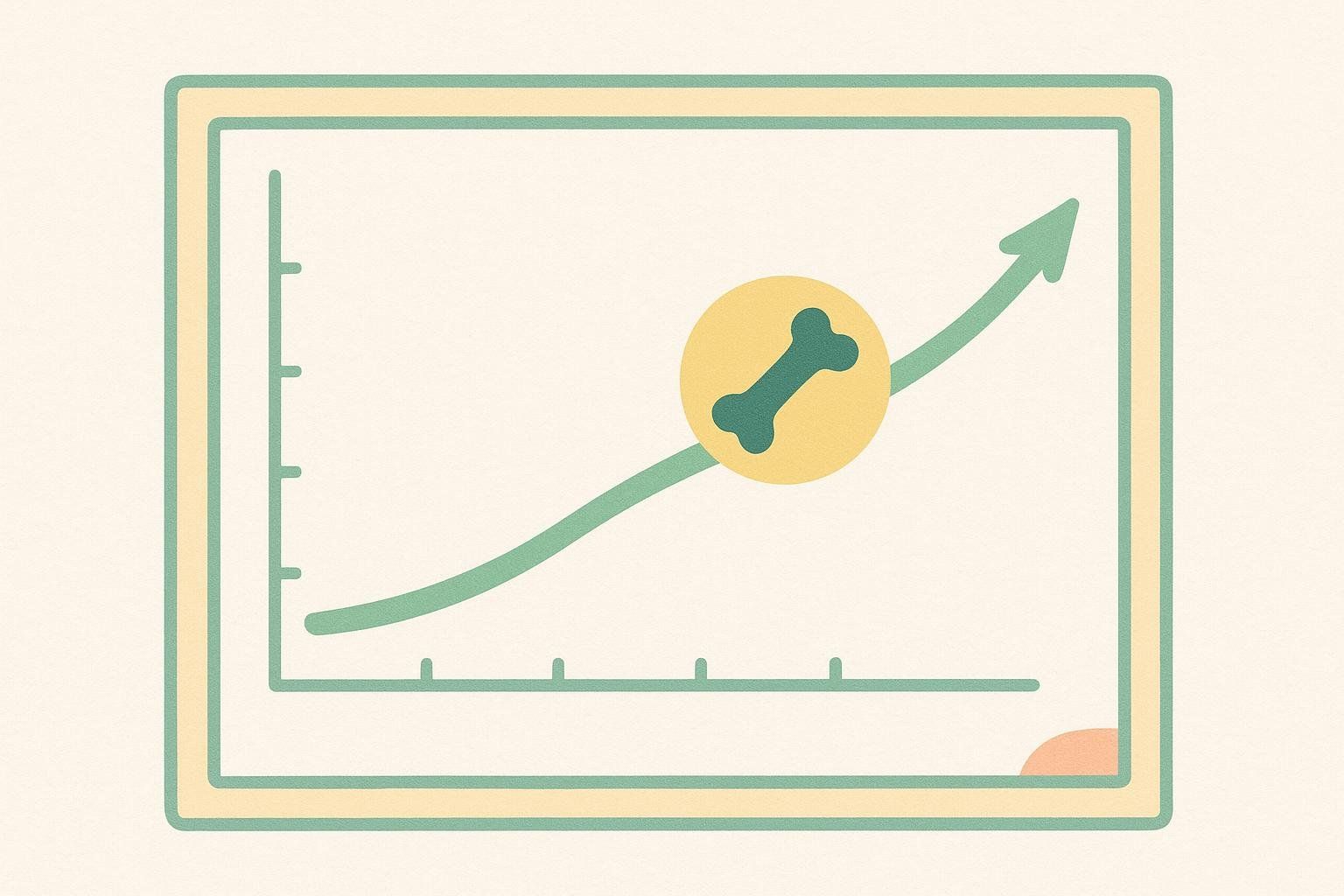
- Want to learn how DEXA works? Check out Bone Density Test: Key Insights and Guidelines.
- Already strength-training? Pair your program with BodySpec’s low-dose scans to track changes in your overall bone density measurements.
- Need nutritional support? Read Vitamin K – Vital for Bone Health to shore up your diet.
Pro tip: Book repeat scans at the same time of day and hydration status for apples-to-apples comparison.
FAQs
Q: How often should I do osteoporosis exercises?
A: Aim for weight-bearing activities on most days (for example, walking 4–5 times per week and doing daily heel drops), muscle-strengthening sessions 2–3×/week, balance drills at least 3×/week, and flexibility work daily or after every workout.
Q: Can yoga build bone?
A: Certain poses (Warrior II, Tree) offer weight-bearing benefits, but avoid deep forward bends if you have vertebral fractures.
Q: Do I need heavy weights?
A: No. Even light resistance bands can stimulate bone if you work close to muscular fatigue.
Q: What’s the best age to start?
A: Today. Peak bone mass tops out by ~30, but systematic reviews show progressive resistance training can still increase femur/hip bone density in adults over 65 (O'Bryan et al., 2022).
Take the First Step Today
Inspired to start? Discuss these exercise pillars with your healthcare provider, then choose one movement from each category to begin. Your future self—and skeleton—will thank you.
When you’re ready for data-driven feedback, schedule a BodySpec DEXA scan and see precisely how your bones respond.
Disclaimer: This article is for educational purposes and is not a substitute for professional medical advice. Always consult your healthcare provider before starting an exercise program.

